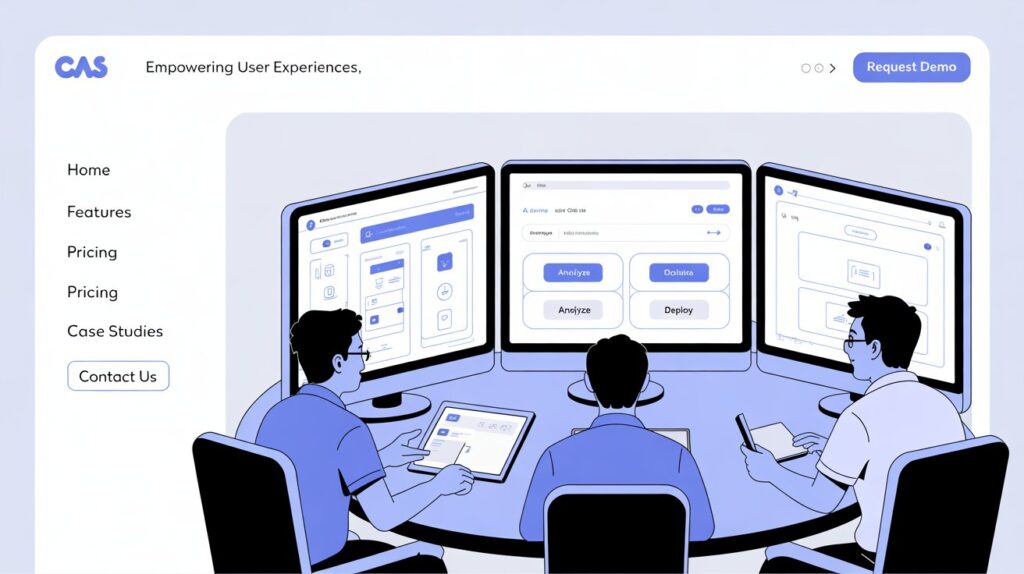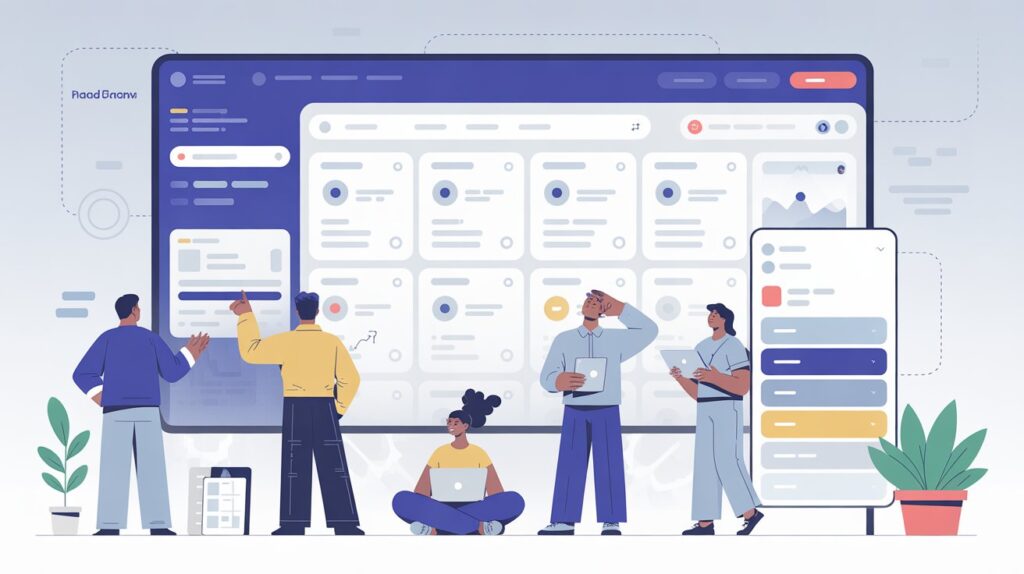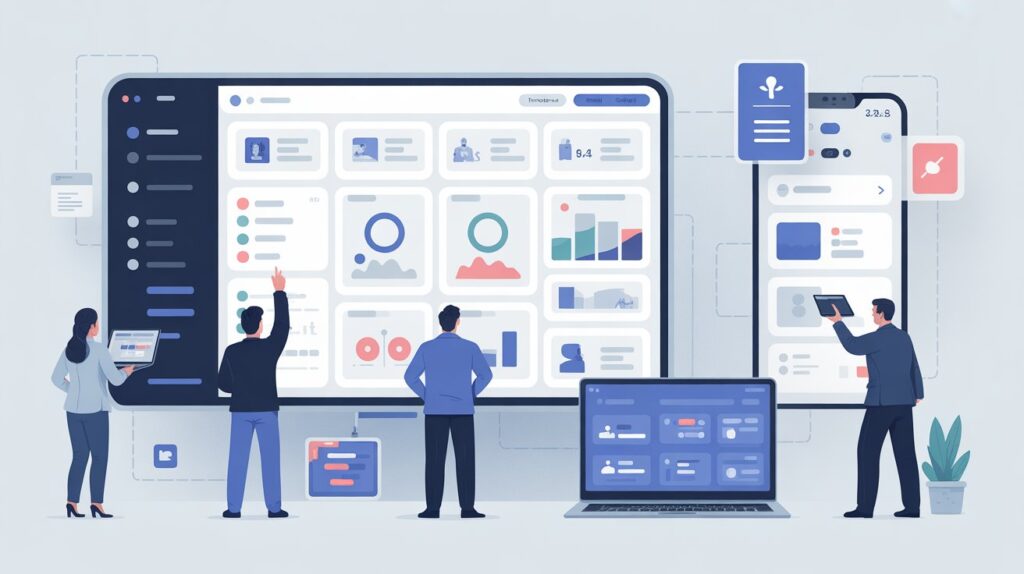The Software-as-a-Service (SaaS) industry has revolutionized how individuals and organizations consume software. Gone are the days of one-time purchases and complex installations—today, customers expect flexible, subscription-based solutions delivered seamlessly through the cloud. This shift has unlocked tremendous opportunities but has also created a highly competitive market where customers can easily switch to alternatives if they encounter friction or dissatisfaction. In such a landscape, Why SaaS Companies Should Prioritize UX Design is more than a rhetorical question—it is the foundation of sustainable success.
User Experience (UX) design is no longer about aesthetics alone. It is about crafting intuitive, efficient, and delightful interactions that solve users’ problems while encouraging them to keep coming back. SaaS companies that treat UX as a business-critical element enjoy higher retention, stronger customer loyalty, and faster growth. In this article, we’ll explore why UX is indispensable for SaaS, the business benefits of prioritizing it, best practices for implementation, examples of companies that got it right, and actionable strategies for embedding UX into every stage of the product lifecycle.
The Stakes: What Happens Without Good UX
High Churn Rates
Churn is the silent killer of SaaS businesses. A confusing interface, poor onboarding, or unnecessary complexity can push users to abandon your product within days or weeks. Since most SaaS customers are on recurring billing, losing them early prevents long-term profitability.
Lost Revenue and Growth Opportunities
Every churned customer represents not only lost subscription revenue but also wasted acquisition costs. Without great UX, even trial users may fail to convert into paying customers, undermining your growth strategy.
Higher Customer Support Burden
If users cannot figure out how to use your product, they turn to customer support. Instead of focusing on innovation, your team spends time solving avoidable usability issues. This inflates operational costs and slows product development.
Negative Brand Perception
Today’s customers share experiences publicly. A poorly designed product results in negative reviews, damaging your credibility and making it harder to attract new users.
Benefits of Prioritizing UX in SaaS
1. Enhanced Retention and Loyalty
Great UX encourages customers to stay. Loyal users are less likely to explore competitors and more likely to renew subscriptions, ensuring predictable revenue.
2. Accelerated Time-to-Value
The faster users understand your product’s benefits, the faster they recognize its value. Effective UX design reduces the learning curve, enabling users to accomplish tasks quickly and confidently.
3. Reduced Customer Support Costs
Intuitive UX lowers the number of support requests. Contextual help, tooltips, and streamlined workflows allow users to troubleshoot independently.
4. Increased Customer Advocacy
Happy customers become brand advocates. They leave positive reviews, share recommendations, and refer peers—powerful organic marketing that drives growth.
5. Strong Competitive Differentiation
In markets with similar features and pricing, UX can tip the scales. A seamless, enjoyable product experience creates a competitive edge that’s hard to replicate.
Key UX Design Principles for SaaS
Deep User Understanding
SaaS products often serve different personas: decision-makers, administrators, and end-users. Effective UX design considers each persona’s unique needs through research, interviews, and usability studies.
Simplicity Above All
Users want to accomplish tasks quickly. Streamline features, reduce clutter, and provide clear calls-to-action. Simplicity often outperforms complexity in customer satisfaction.
Seamless Onboarding Experiences
Onboarding should not overwhelm users. Progressive disclosure, step-by-step tutorials, and contextual guides ensure users learn at their own pace.
Data-Driven Dashboards
Dashboards should prioritize actionable insights, not overwhelm with raw data. Customizable widgets, graphs, and summaries help users extract value instantly.
Responsiveness and Speed
Users expect performance across devices. Slow load times or unresponsive interfaces drive abandonment. Mobile optimization is no longer optional.
Consistency Across Interfaces
Consistency builds trust. Fonts, colors, navigation structures, and terminology should remain uniform across the product.
Accessibility and Inclusion
Inclusive design expands your reach. Features such as screen reader support, adjustable text sizes, and high-contrast modes empower all users to engage effectively.
Micro-Interactions and Feedback
Feedback builds confidence. Subtle animations, confirmation messages, and progress indicators guide users while reinforcing positive behavior.
How to Prioritize UX in SaaS Development
Conduct Thorough User Research
Start with empathy. Interviews, usability testing, and analytics reveal where users struggle and what they value most.
Audit Existing Experiences
Heatmaps, funnel analysis, and support tickets uncover problem areas. Identify bottlenecks in navigation, onboarding, or task completion.
Create a UX Roadmap
Prioritize improvements by impact. Implement quick wins, such as simplifying forms, while planning long-term redesigns for complex workflows.
Cross-Functional Collaboration
UX is a team effort. Designers, developers, product managers, and customer success teams must work together to ensure user-focused decisions.
Measure and Iterate Continuously
Track UX-related metrics such as activation rate, churn, feature adoption, and Net Promoter Score (NPS). Use this data to refine and evolve designs.
Real-World Examples
Example 1: Improving Onboarding
A SaaS analytics tool struggled with trial conversions. By introducing an interactive onboarding flow with personalized goals, conversions increased by 30%, while support requests dropped significantly.
Example 2: Redesigning Dashboards
A fintech SaaS simplified its dashboard by focusing on top KPIs and customizable layouts. This change led to higher daily active usage and stronger engagement among enterprise customers.
Example 3: Expanding Accessibility
An HR SaaS platform added keyboard navigation and screen reader compatibility. The improvements attracted government clients who required compliance, opening new market opportunities.
Common UX Pitfalls in SaaS
- Adding too many features without considering usability.
- Neglecting mobile optimization.
- Designing inconsistent modules.
- Failing to gather ongoing feedback.
- Providing poor error handling and unclear help options.
Avoiding these pitfalls requires ongoing investment in research, testing, and refinement.
Future Trends in SaaS UX
Personalized Experiences
AI-driven personalization will tailor workflows, dashboards, and suggestions to individual users.
Automation and AI Assistance
Chatbots, predictive text, and intelligent onboarding assistants will reduce user effort while improving efficiency.
Conversational Interfaces
Natural language commands and voice-based features will provide alternative interaction models.
Seamless Cross-Device Experiences
Users expect to switch between mobile, tablet, and desktop without losing progress.
The Rise of Customization
Dark mode, flexible themes, and adjustable layouts will cater to user preferences, enhancing satisfaction.
FAQs
1. Why is UX design crucial for SaaS?
Because SaaS relies on subscriptions, retaining customers is essential. UX design reduces churn, improves satisfaction, and enhances engagement.
2. How does UX affect revenue?
Good UX boosts trial-to-paid conversions, improves retention, and reduces support costs—all directly impacting revenue growth.
3. What KPIs measure UX effectiveness in SaaS?
Activation rate, churn rate, customer satisfaction (CSAT), Net Promoter Score (NPS), and feature adoption rates are key.
4. Can small SaaS companies afford UX design?
Yes. Even with limited budgets, startups can perform user research, run lightweight tests, and implement incremental changes that make a big impact.
5. What distinguishes UX from UI in SaaS?
UI refers to the visual elements, while UX encompasses the overall journey—how users interact, accomplish tasks, and feel about the product.
Conclusion
For SaaS companies, the difference between thriving and failing often comes down to user experience. A well-designed product not only attracts customers but also keeps them engaged, satisfied, and loyal. By focusing on retention, reducing support costs, and creating a seamless journey, UX becomes a core driver of business growth.
In the crowded SaaS market, it is not enough to simply offer features. Companies must ensure those features are accessible, intuitive, and enjoyable to use. Ultimately, the question is not Why SaaS Companies Should Prioritize UX Design, but how quickly they can adopt user-centered practices to stay competitive. SaaS businesses that make UX a strategic priority today will be the ones that dominate tomorrow.












